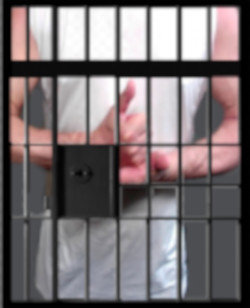 By Supporter Contributor Emily Syane
By Supporter Contributor Emily Syane

This is a chart showing trends in arrests for drug abuse violations divided by age groups from 1970-2003. (Photo credit: Wikipedia)
While the media and social networks teem with inspirational stories about deaf individuals and the deaf community, few people outside the community know about its dark side. One such topic few people discuss it drug abuse. Deaf and hard of hearing people are at higher risk for drug and alcohol abuse, especially the youth. Isolation, unemployment, and communication problems – these are just some of the reasons deaf people get into drugs. Some may try drugs “to fit in” and soon find themselves addicted. Many family members ignore problems. They may think they can simply wipe away drug problems, using a magic toxin wash to wipe the slate clean. Rehab is the only answer, but few facilities can cope with deaf patients.
What are they or family members to do? Regular rehab programs and treatments may not work. Although many of these programs have been around for decades and have been proven effective, few are geared toward deaf drug addicts and some are even counterintuitive. Most treatments require group therapy sessions, which not all deaf people can join. Some facilitates May not have an ASL translator around all the time and sometimes, there are some issues people with regular hearing will not understand. They may miss out on many of the interactions in facilities and might not be able to express themselves fully.

Image courtesy: Dailymail.co.uk
What would be an ideal scenario? The Minnesota Chemical Dependency Program for Deaf and Hard of Hearing Individuals (MCDPDHHI) is a good example. This facility has a special program that meets the needs of HHI and deaf people and helps them get the treatment they need. The facility has three phases in treatment:
Phase 1: Assessment
Like any type of treatment facility, the patient must first go through an evaluation. Their medical histories and backgrounds are reviewed, but also the patients’ drug abuse history, social history, and of course, a communication assessment.
Phase 2: Primary Treatment
The second phase consists of many standard items found in regular rehab facilities. The center uses the 12 Steps and teaches this to their patients, with modifications to fit the needs of their patients. The family is also involved in the treatment and is invited to join some sessions. Many drug issues are related to family issues so this phase is important. Behavioral contracts are also a part of this process. Patients are given guidelines on how they should behave and how they can help make the treatment progress better.
Phase 3: After Care and Extended Care
As with any treatment program, the real work comes when the patient has to go back out into the real world. The patient now has to go back out and try to be on their own and stop themselves from going off the wagon. The center will arrange for patients to join 12 Step meetings, go to relapse prevention classes, and have a therapist fluent in ASL to help them. For those who need assistance, the center may also help them find a halfway house or perhaps vocational assistance so they can slowly integrate back into society.
Places like the Minnesota Chemical Dependency Program for Deaf and Hard of Hearing Individuals are few and far between. Not many people understand and give priority to deaf and hard of hearing individuals, which is why more education, and less prosecution, is needed when dealing with people who abuse drugs.
Emily Syane is a health blogger and customer service representative for YourCleanDrugScreen; she loves to write a blog about life, career, and anything about new research. She is doing a job as secretarial assistance at body Detoxification Company www.synergydetox.com
Get in touch with Twitter & YouTube










Pingback: Genetic Test for Deafness: What Are its Limits? | deafinprison